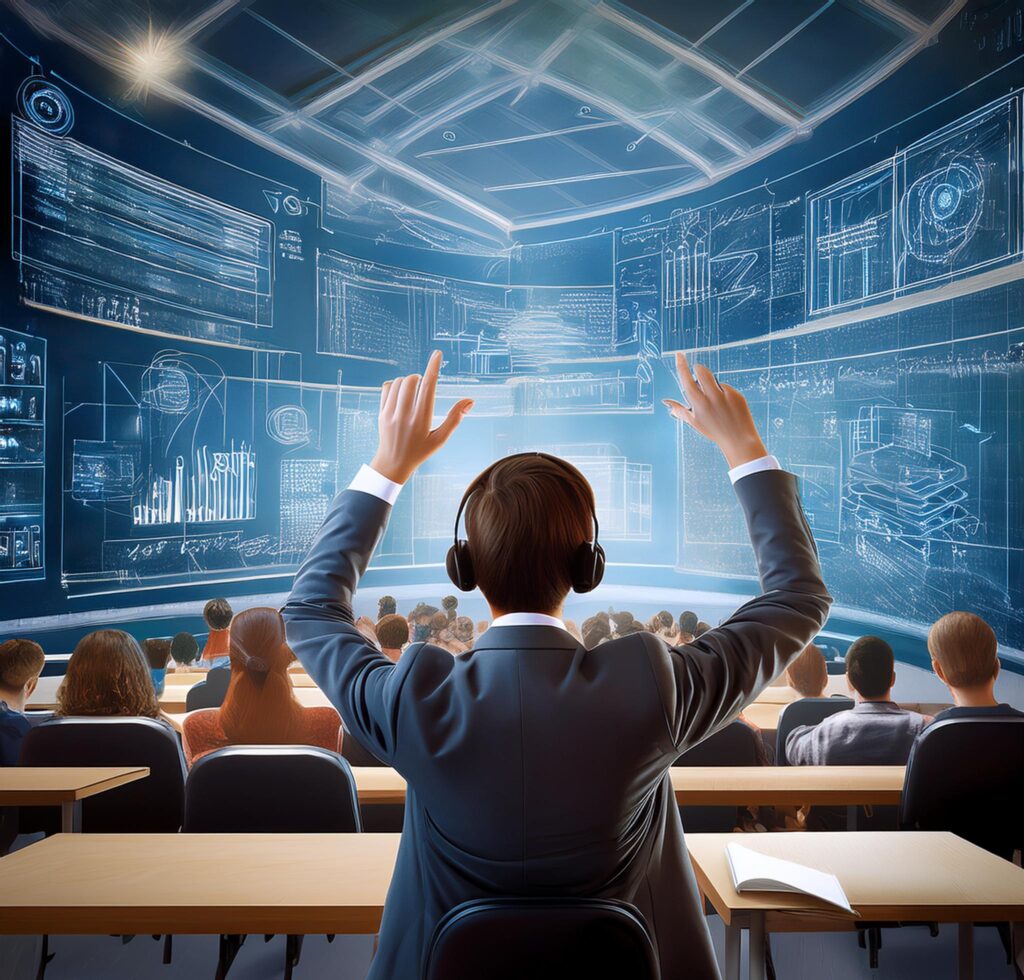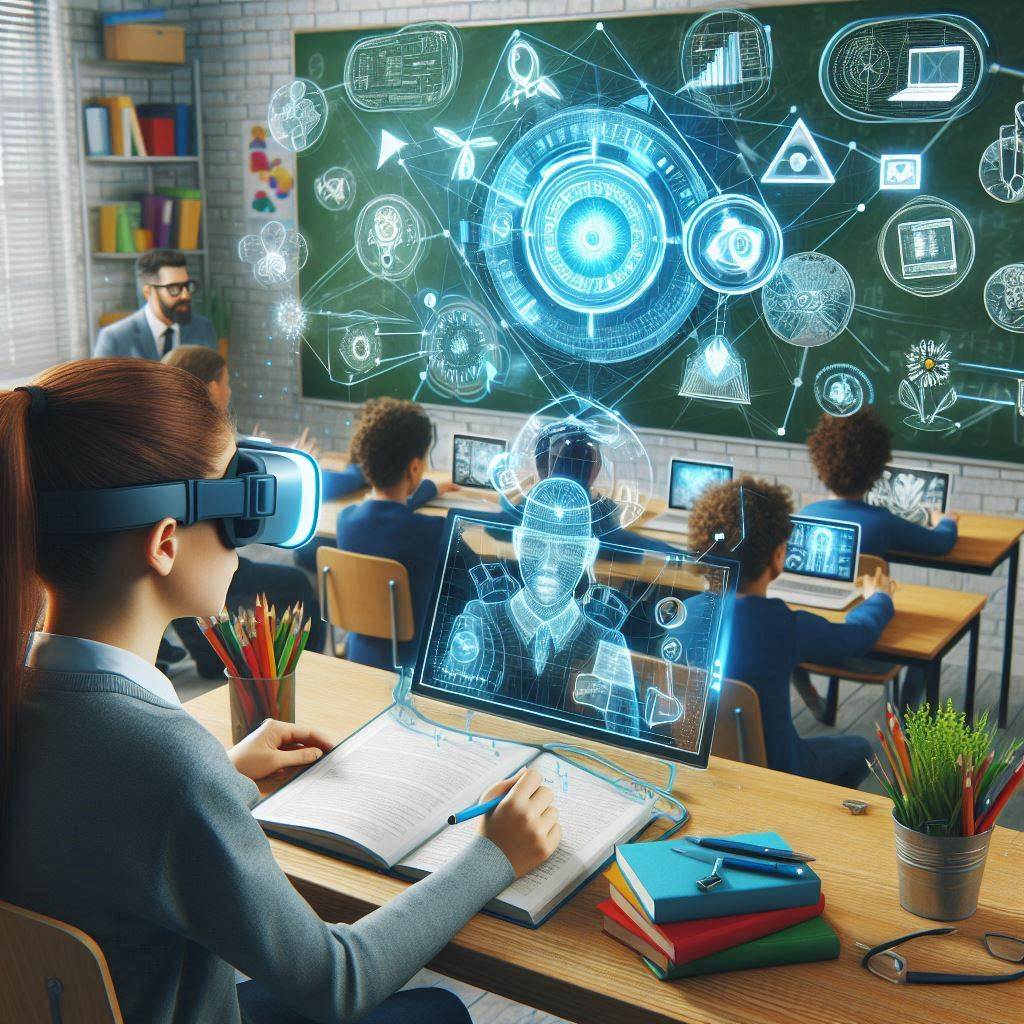Introduction
Imagine walking into a classroom where historical events come to life right before your eyes, complex scientific concepts are broken down into interactive 3D models, and language lessons are more immersive than ever. This is not the future; it’s the present, thanks to Augmented Reality (AR). But what exactly is AR, and how is it revolutionizing education?
In this article, we’ll explore the incredible potential of AR in the classroom, especially for beginners trying to grasp the basics of this technology. We’ll look at how it enhances learning, the benefits it offers, the challenges it faces, and how you can start integrating AR into your teaching. Let’s dive in!
What is Augmented Reality?
Augmented Reality (AR) is a technology that overlays digital information—such as images, videos, or sounds—onto the real world, often through devices like smartphones, tablets, or AR glasses.
In a classroom setting, AR can bring textbook images to life, allow students to interact with virtual objects, and create a more engaging learning experience. It’s like adding a digital layer to the world we see, making learning not just a process of absorption but an interactive adventure.

The Evolution of Augmented Reality in Education
AR’s journey into education began modestly, with simple applications like flashcards that could trigger 3D animations when viewed through a device. Over time, as technology advanced and devices became more powerful, AR’s potential in education grew exponentially.
Today, AR is used in various ways, from virtual field trips that transport students to different parts of the world to interactive models that help explain complex scientific concepts. As AR technology continues to evolve, its role in education is only expected to grow, making it an essential tool for modern classrooms.
How Augmented Reality Enhances Learning
One of the biggest advantages of AR is its ability to make learning more visual and interactive. For instance, instead of reading about the solar system in a textbook, students can use AR to view and manipulate 3D models of planets, moons, and other celestial bodies. This not only makes learning more engaging but also helps students better understand abstract concepts.
For example, in a biology class, students can use AR to explore the human body in 3D, examining organs and systems as if they were holding them in their hands. This hands-on approach can lead to a deeper understanding of the material.
Benefits of Using AR in the Classroom
AR offers numerous benefits for both students and teachers:
- Improved Student Engagement: AR makes lessons more interactive, keeping students interested and involved in the learning process.
- Enhanced Retention and Comprehension: Visual and hands-on learning experiences help students better retain information and understand complex concepts.
- Personalized Learning Experiences: AR can adapt to different learning styles, allowing students to learn at their own pace and explore topics that interest them.

AR Tools and Applications for Classrooms
There are many AR tools and apps available that cater to different subjects and age groups. Some popular ones include:
- Google Expeditions: Offers virtual field trips that let students explore different parts of the world.
- QuiverVision: Turns 2D drawings into interactive 3D models.
- Merge Cube: Allows students to hold digital objects in their hands using a simple cube and a smartphone.
These tools can be used to enhance lessons in subjects like science, history, mathematics, and more.
Augmented Reality in STEM Education
STEM (Science, Technology, Engineering, and Mathematics) is one of the areas where AR has made a significant impact. In science classes, for example, AR can be used to simulate chemical reactions, visualize molecular structures, or explore the anatomy of animals. In engineering, students can use AR to design and test prototypes in a virtual environment before building them in real life.
The real-world applications of AR in STEM education are vast, and they help students see the practical relevance of what they’re learning.
AR in Language Learning
AR can also play a vital role in language learning. By integrating AR into language lessons, teachers can create more immersive experiences. For example, students can point their devices at objects around the classroom, and the app will display the name of the object in the target language. This method helps students connect words with their real-world counterparts, making it easier to learn new vocabulary.

Challenges and Limitations of AR in Education
While AR offers many benefits, it also comes with its own set of challenges:
- Technical Challenges: Not all schools have the necessary hardware and software to implement AR effectively.
- Accessibility and Cost Concerns: AR technology can be expensive, and not all students may have access to the required devices.
- Teacher Training and Adaptation: Teachers need proper training to integrate AR into their lessons effectively. This can be time-consuming and requires a willingness to adapt to new teaching methods.
Implementing AR in Your Classroom
If you’re interested in introducing AR to your classroom, start by exploring the available tools and apps. Begin with small, simple activities that can be easily integrated into your existing lessons. As you become more comfortable with the technology, you can start creating more complex and interactive lessons.
Preparing lesson plans with AR integration can be challenging at first, but with practice, it becomes easier. The key is to focus on how AR can enhance the learning experience rather than just adding it for the sake of using technology.
Case Studies: Successful AR Implementation
Several schools worldwide have successfully implemented AR in their classrooms with impressive results. For example, a school in California used AR to create virtual field trips for students who couldn’t go on actual trips due to budget constraints. This not only provided an enriching experience but also sparked students’ curiosity about different cultures and places.
Another example is a school in Finland that used AR to teach geometry. Students could visualize and manipulate 3D shapes, which helped them understand spatial relationships better. These case studies demonstrate the potential of AR to transform education when used effectively.

The Future of Augmented Reality in Education
The future of AR in education looks promising. As technology continues to evolve, we can expect to see even more sophisticated AR tools and applications. Emerging trends like AR glasses and wearable devices could further enhance the learning experience, making it even more immersive and interactive.
In the next decade, AR could become a standard part of the educational toolkit, much like computers and projectors are today. This shift will require ongoing investment in technology and teacher training, but the potential benefits make it a worthwhile endeavor.
How to Choose the Right AR Tools
Choosing the right AR tools for your classroom can be overwhelming, given the many options available. When selecting AR apps and tools, consider the following criteria:
- Ease of Use: The tool should be user-friendly, both for teachers and students.
- Compatibility: Ensure the tool is compatible with the devices you have available.
- Educational Value: The tool should align with your educational goals and enhance the learning experience.
- Cost: Consider whether the tool is affordable and whether there are any ongoing subscription fees.
By carefully evaluating your options, you can find the right AR tools that meet your needs and budget.

Conclusion
Augmented Reality is not just a buzzword; it’s a powerful tool that has the potential to transform education. By making learning more interactive, visual, and engaging, AR can help students better understand complex concepts and retain information more effectively. While there are challenges to implementing AR in the classroom, the benefits far outweigh the drawbacks.
As we look to the future, it’s clear that AR will play an increasingly important role in education. Whether you’re a seasoned educator or just starting out, now is the perfect time to explore how AR can enhance your teaching and help your students succeed.

FAQs
What is the differences betweenness AR and VR in educations?
Both have unique applications in education, but AR is often more accessible and easier to integrate into existing lessons.
How can AR improve student engagement?
AR makes learning more interactive and visual, which can capture students’ attention and keep them engaged in the material.
Are there affordable AR tools for classrooms?
Yes, many affordable AR tools and apps are available, some of which are even free. Tools like QuiverVision and Merge Cube offer budget-friendly options for integrating AR into your lessons.
What subjects benefit most from AR?
AR can be used in various subjects, but it is particularly effective in STEM education, language learning, and history. It helps students visualize complex concepts and makes abstract ideas more concrete.
How can teachers learn to use AR effectively?
Teachers can start by experimenting with simple AR tools and gradually incorporating them into their lessons. Many online resources and training programs are available to help educators learn how to use AR effectively.


